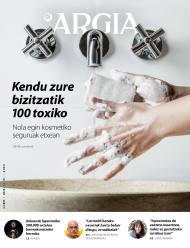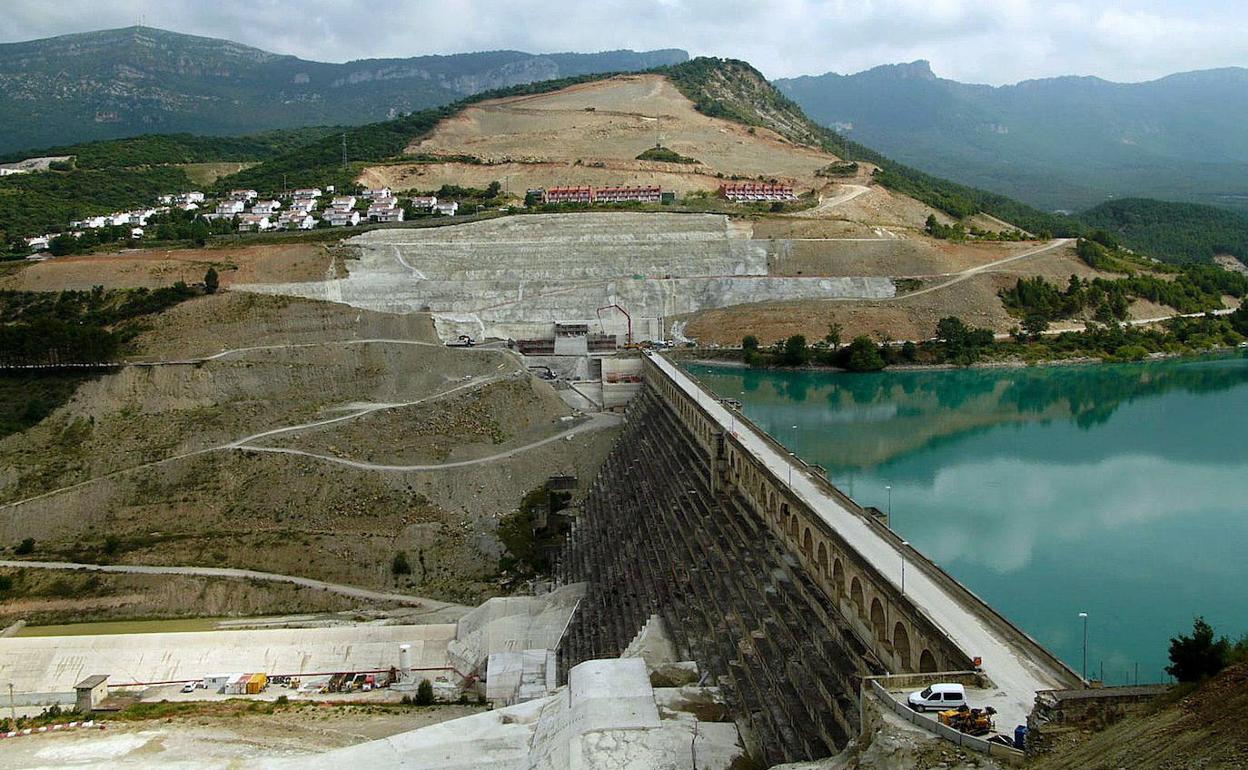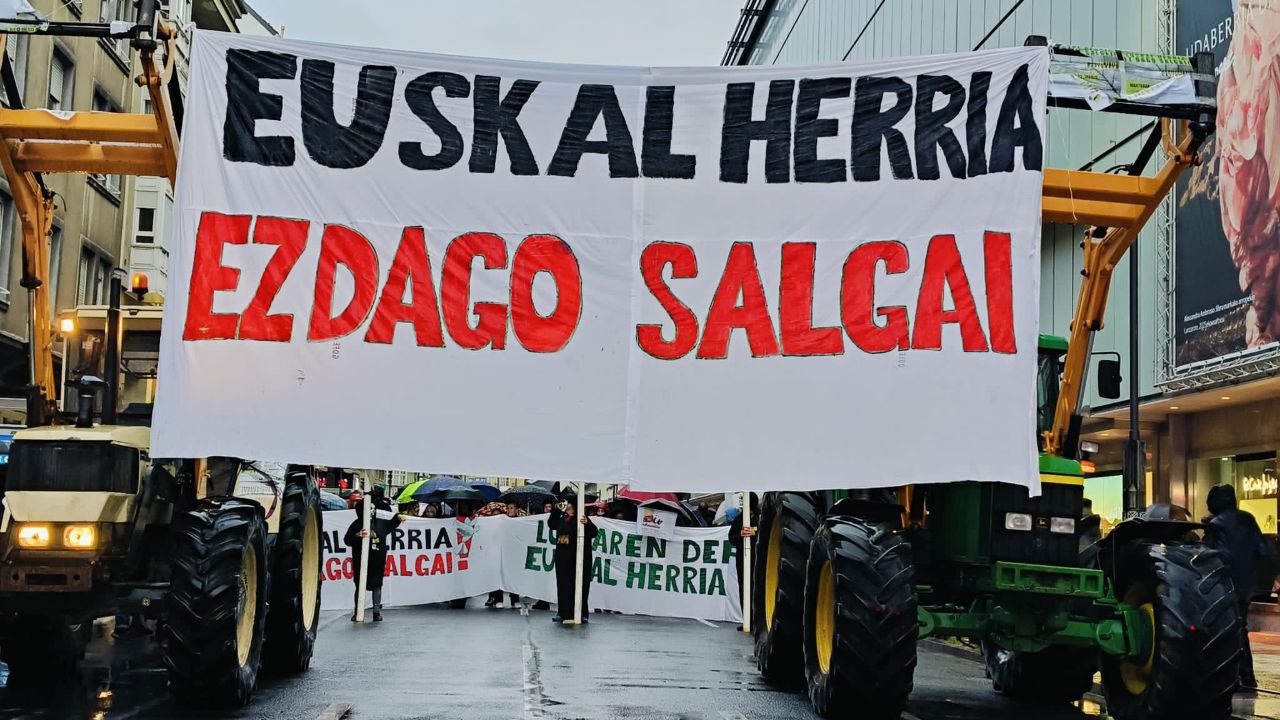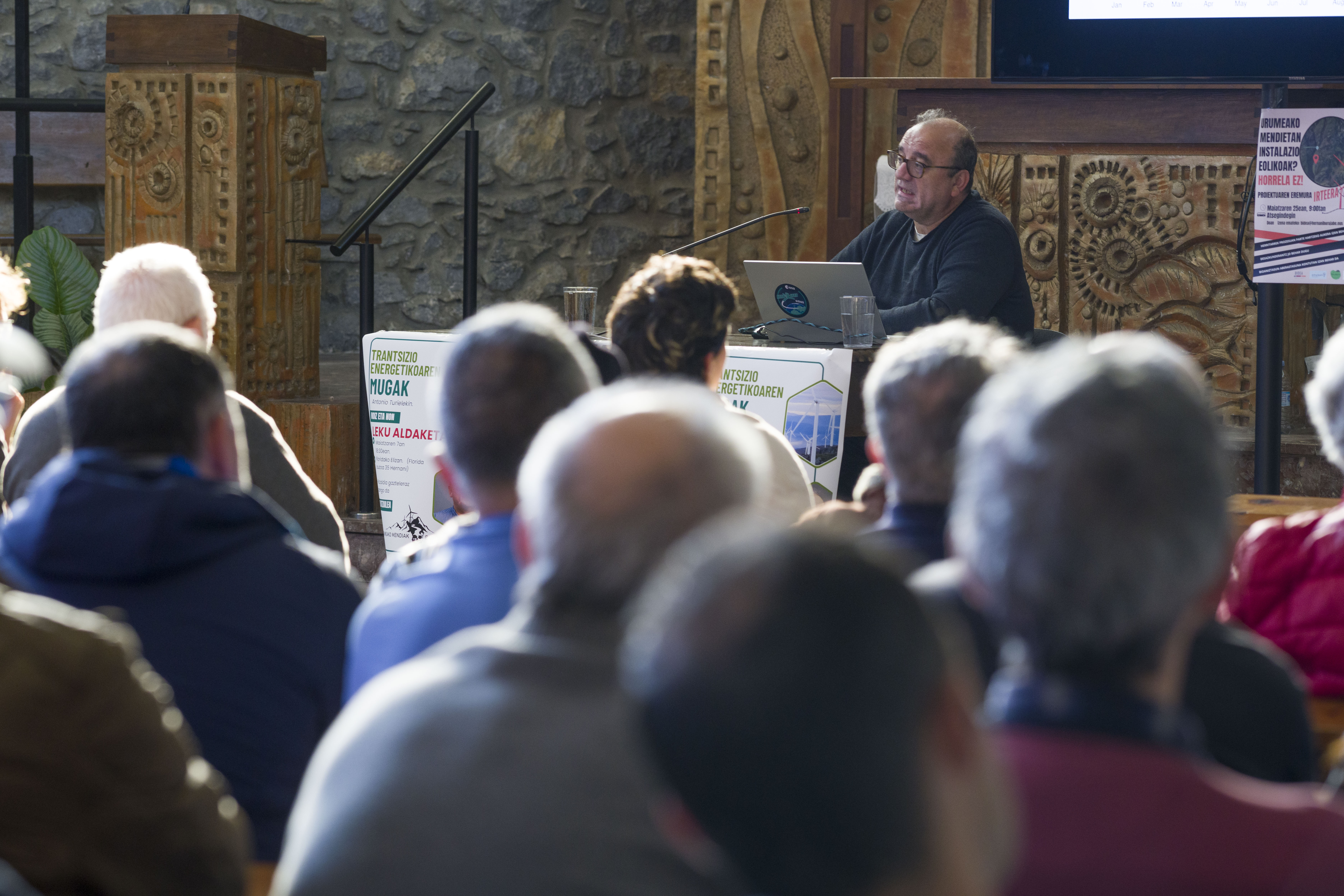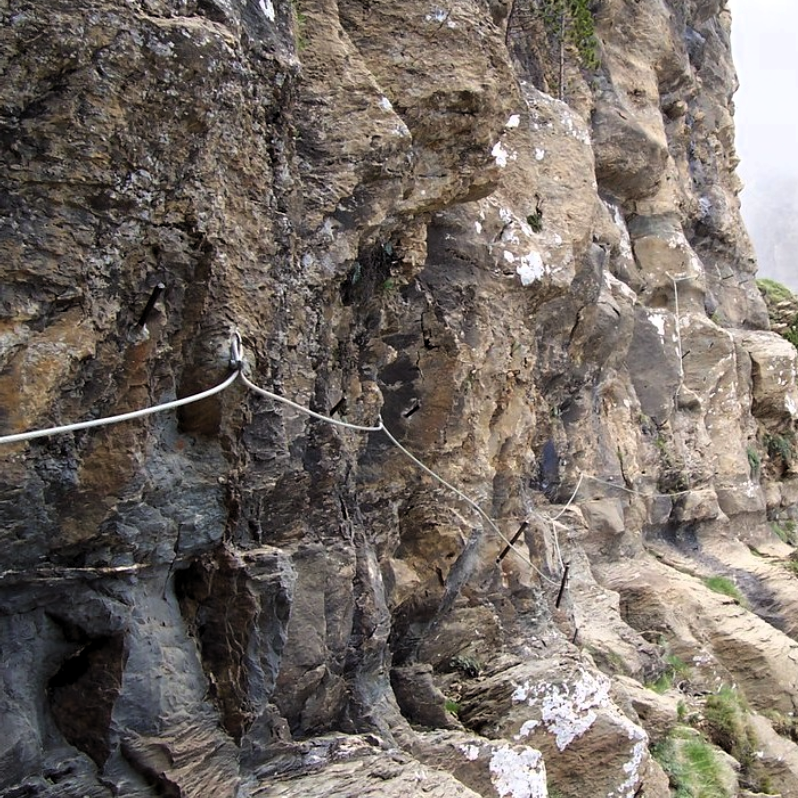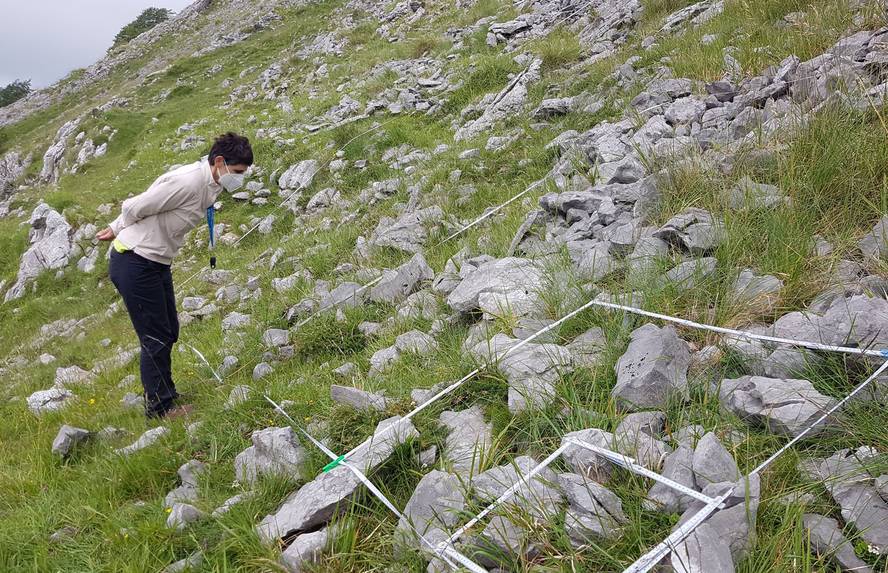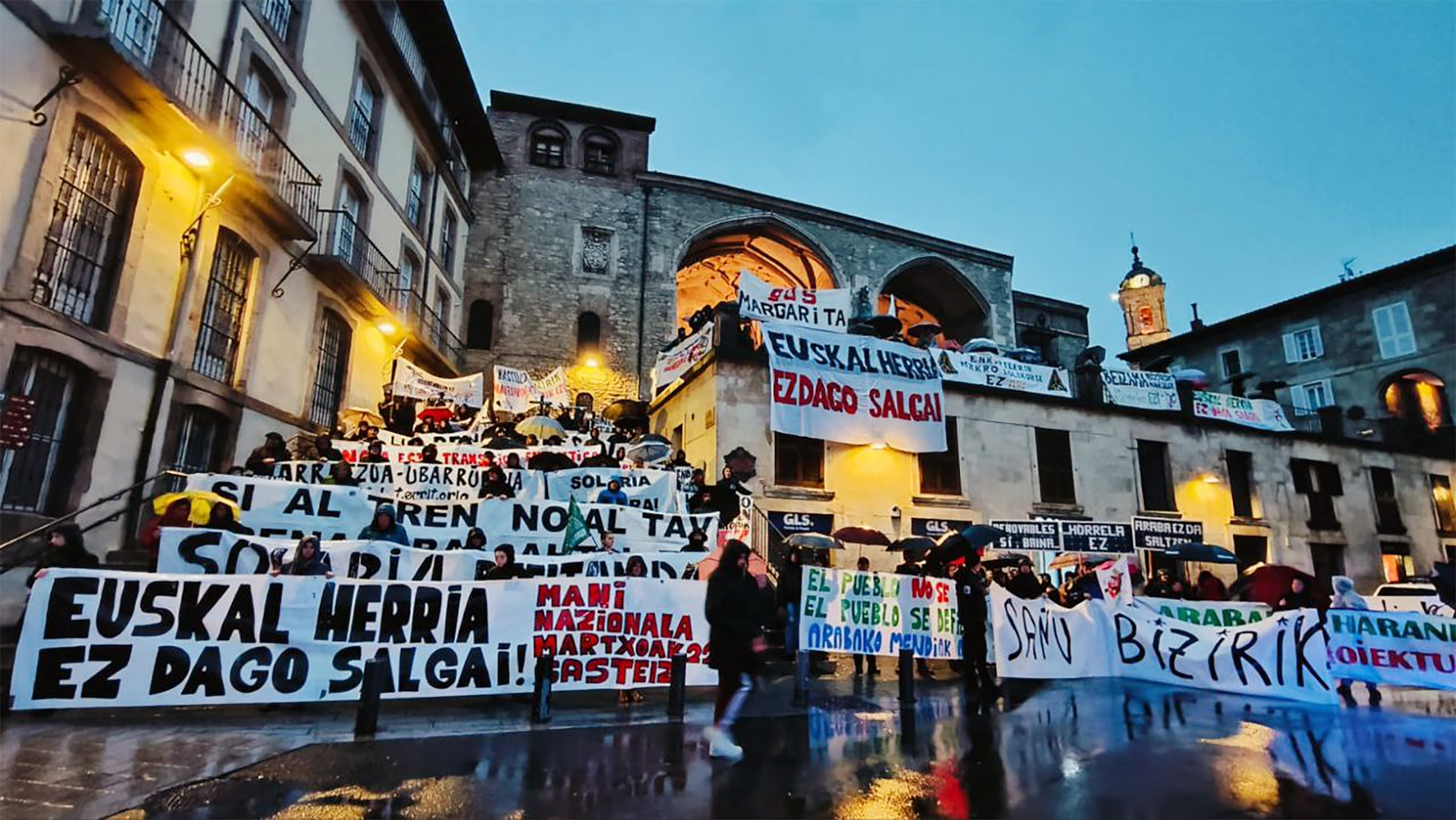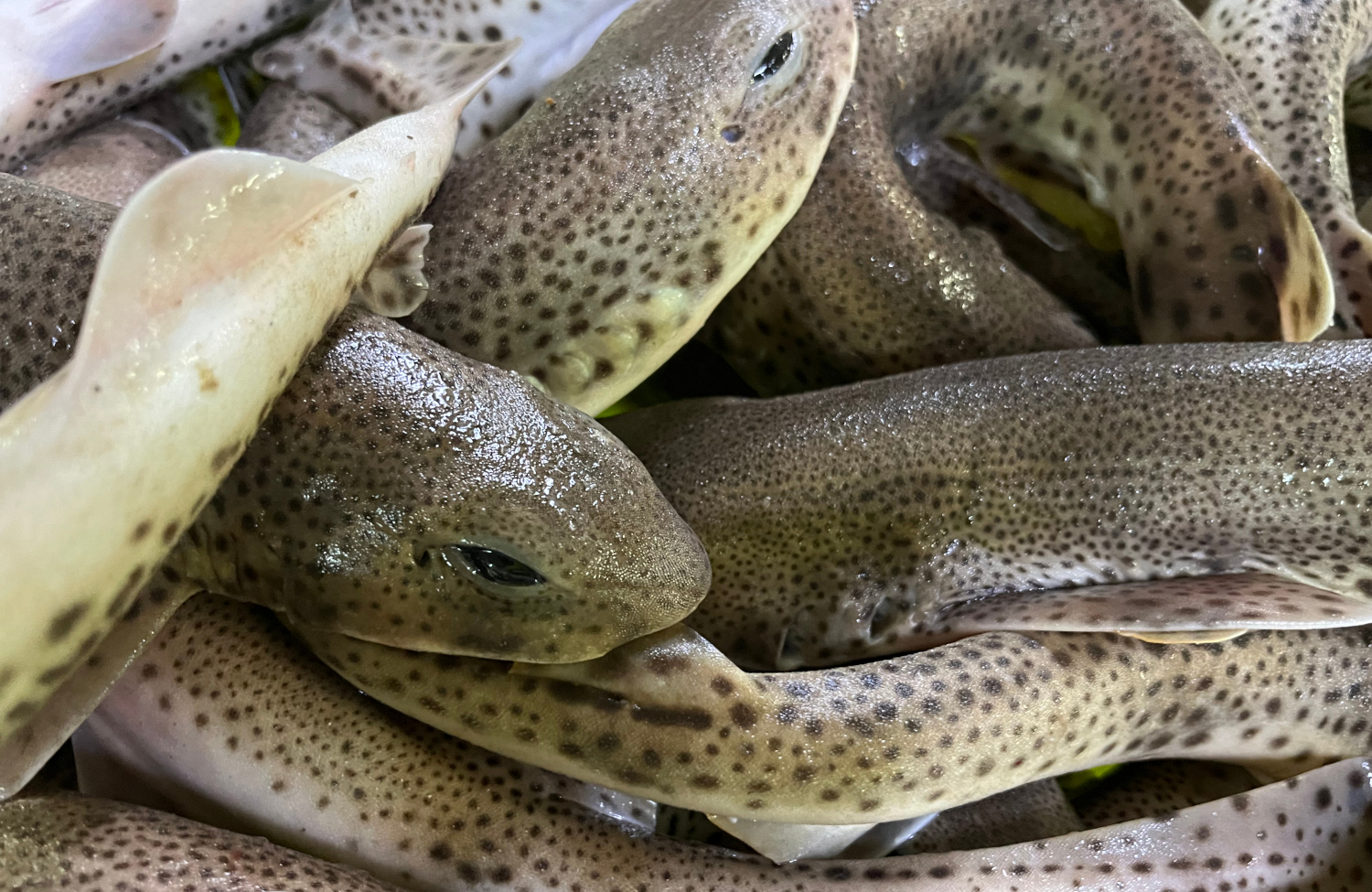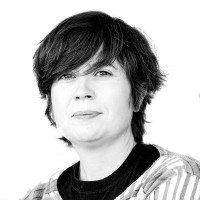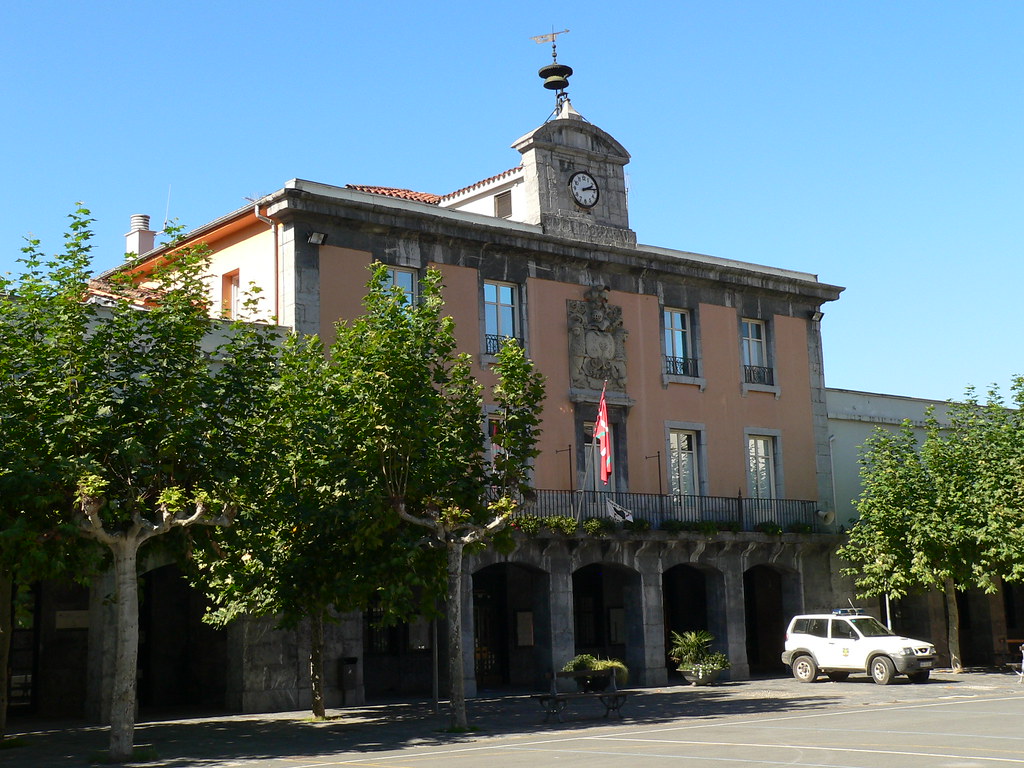How to wash and care without contaminating the body and the Earth?
- Skin is not a superficial issue, but a limit to the outside and the protection of ourselves. However, if we use industrial cosmetics, our body introduces chemical toxins into the skin and when it moves through the hole in the shower, we contaminate the water and the Earth every day. Garbiñe Larrea in her book Cosmetics with medicinal plants offers tools to get out of this contaminating model: He has explained 67 formulas he has developed and tested in the courses he has taught over the years. So, attention: this book isn't just for some bodies; whether you're bearded or not, flirtatious or not, if you shower, it's also for you.
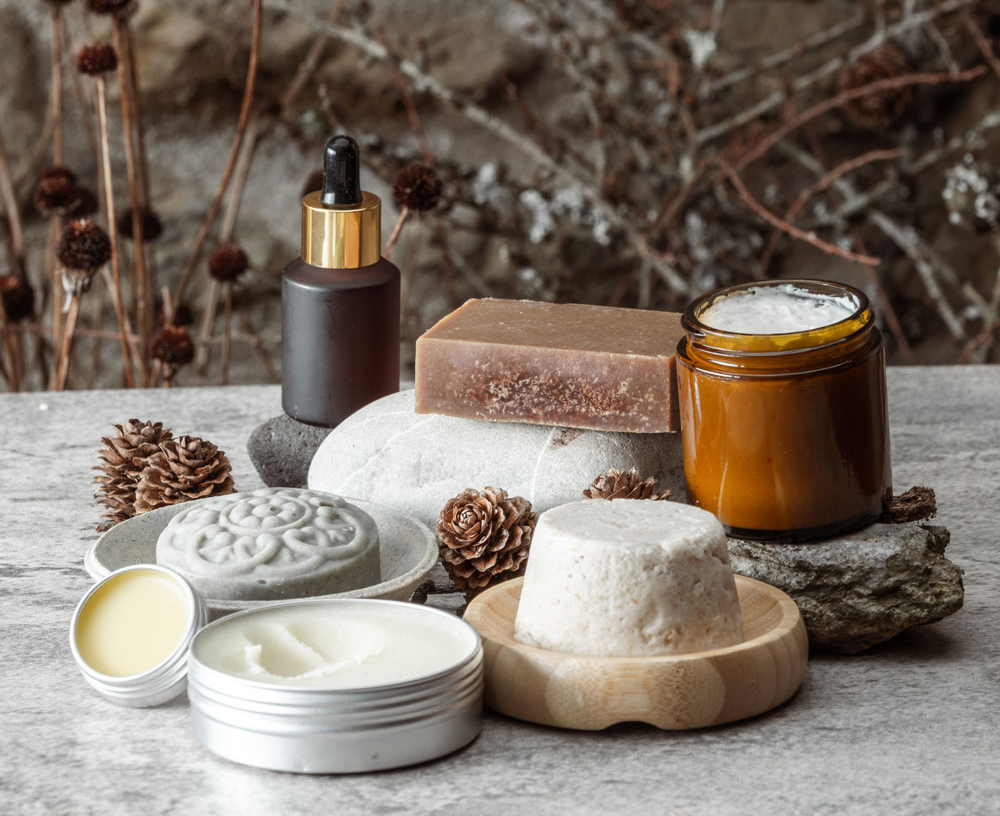
How many cosmetics do you use to clean, monitor and perfume your skin, hair, and body parts? The least you use will use shower soap, shampoo and toothpaste, and many will also use moisturizing cream, deodorant and colony (even occasionally). The bait will often rub the foam and softener before making the bait. Jennifer E has found 921 breast cancer-related ingredients in the products we use for basic hygiene and maintenance. Research works led by Kay and conducted in the United States, published in January 2024 in the scientific journal Environmental Healt Perspectives. These substances include parabens and phthalates, which are endocrine disruptors that affect the hormonal system.
From there, the more products we use, such as the lips, the creams for the eyes, the products to shape and hold hair, the makeup... we add and mix the toxic components, producing cocktail effects. Nicolas Olea perfectly explains what the cocktail effect is. She, a researcher and professor at the University of Granada in Radiology and Physical Medicine, is a global reference in the study of the relationships between endocrine disruptors and cancers. In an interview with Ekologistak Martxan, Olea explained the following: "Endocrine disruptors are chemical pollutants that alter hormones. Some of these chemical contaminants cause an estrogen hormone that is related to breast cancer. However, we have had difficulties in associating exposure to these chemical pollutants with cancer, as the ordinary citizen receives this exposure in small doses and, looking at each of them individually, it seems that it does not have enough presence to have toxic consequences. But the problem is, there are a lot of compounds that act in combination. From this point of view, we've seen the relationship between these endocrine disrupting pollutants and cancers. It is not the action of a single chemical, but the combined effect that occurs in small doses increases the risk of developing malignancy."
As Garbiñe Larrea explains in his book Cosmetics with Medicinal Plants, every day we serve the body a cocktail of 100 toxic products on average in cosmetics. The gender system also influences this issue, and women supplement the cocktail with an average of 185 toxic components a day and men with 85. But these data come from a research carried out ten years ago, "and it's more days," warned Larrea, who said it's not a study.
"It's a problem for those who use those who don't have. I use well-known brands," some readers may think. The study, conducted by the Danish Consumer Council in 2021, analysed 39 products and showed that known international brands use allergic chemicals and endocrine disruptors. In the 39 products analyzed, 63 contaminants were found, of which 23 were suspected of being endocrine disruptors, resulting in a rate of HIV/AIDS penetration. This disruption relates the loss of fertility and harm to fetuses, the development of type 2 diabetes, obesity and the development of cancer in hormonal organs, among others. In addition, three of these products contained illegal components in Europe.
"At the moment we are not aware of the chemical pollution that produces this simple action we do every day. This year, the International Endocrinology Association has warned to what extent these synthetic components are hacking our hormonal system, and especially in the case of women, mimicking our estrogen, that is, how bad they are doing inside as external estrogens," Larrea said. Some of these problems have been detected in your naturopathic consultation: "I've worked for years in the consultation and I've met a lot of people with skin diseases. These diseases, often not natural or natural, were caused by industrial cosmetics. I was struck by the fact that some of the products made for the youngest were the worst! And that their accumulation was the cause of dermatitis for a year. They all stopped using them for a week and they often turned to the problem." The aforementioned US study also corroborated this: Many of the 921 carcinogenic substances are common in children's lotions and shampoos, and not in anti-lice drugs, where pesticide malation has also been found.
In an interview with Euskadi Irratia, ARGIA journalist Onintza Irureta told her that cosmetics will be "the asbestos of the future". "It was then said that some solar creams had been banned in several countries of the world, as those creams were destroying the coral of Venice. And if it destroys the coral, how do we give it so quietly on the skin? What do we think is not going to have a negative impact? ". He stressed that cosmetics contaminate us twice: "When we use cosmetics in the shower or in the sink we pollute the water and with that water that runs through the sewer we are polluting the Earth and that polluted Earth is again transmitting the contagion. You have to break that cycle." Among other things, the book Cosmetics with Medicinal Plants contributes to this.
PFASs in cosmetics and water
In 2021, the team led by physics professor at the University of Notre Dame of the United States Graham Peaslee analyzed 200 cosmetics from the United States and Canada and the results were published in the journal Environmental Science and Technology Letter. According to these, 56% of eye and base products, 48% of lip products and 47% of face masks had a high risk of the presence of PFAS substances, which in their day were in "anti-aderezing" kitchen appliances.
Of these products, 39 had different PFAS, between 4 and 13, but only one of them stated on the label that the PFAS was among its ingredients.
Peasle explains what the above picture shows as follows: "On the one hand, there is an individual risk: these products that are produced around the eye and mouth can be absorbed by the body through the skin, tear pathways, breathing and swallowing. PFAS is a persistent chemical that, when it reaches the blood, stays there and accumulates. But there is an added risk of environmental pollution when it comes to creating and removing these products, which can affect many more people."
Tribute to beauty, but laughing at the norm
We tend to relate the world of cosmetics to beauty. Larrea addresses the theme of beauty from its branches and writes the book from this location: -I put this quote from Susan Sontang in the preamble: 'Being beautiful is not bad, what is wrong is the obligation to be beautiful'. Our choice has been not to reflect in the book that obligation to be beautiful." From the beginning it was very clear that I didn't want to see anyone in the photos: "Because in the book, we didn't want to express the beauty of people. In the current model of cosmetics, both industrial and natural, the beauty of people is used to justify the extent to which the product is good. On the contrary, for us beauty is a value, but it is in other elements: the process of making cosmetics by itself is beautiful, the products we can make are beautiful and the plants we use to make them are beautiful. In that we have put the spotlight on beauty and not on the consequences that we can achieve with the donation of these products in the body, because it seems to us that this canon of beauty that they want to sell us is temporary, that it is difficult to maintain and behind that there is a kind of dictatorship that does not respect the diversity of people and that has a kind of phobia with aging, that would force us to eliminate in the pictures..."
The liberation of the beauty of the aesthetic canon means that in the book we do not find recipes to cover the eyelets, nor makeup formulas. This political option is also reflected in the photographs that Ibai Arrieta has taken for the book, as Arrieta pointed out in the book presentation: "We haven't taken the photos in a lab, we've gone to the sites where medicinal herbs work, and in each photo we've questioned whether we were reproducing the canons of beauty or not," he added. Maitane Gartziandia has been in charge of making the cover and design of the book, and has also participated in the photo sessions. In his words, "industrial cosmetics show in the photos very white products - for this they use colorants," adds Larrea - while the soaps and creams that appear in this book are not so white, have natural colors, are more organic," Gartziandia rounded.
Without falling into the canons of beauty, these three creators have made a great book with ARGIA.
Lavender field of Navarra. Beautiful when it's biodiversity
Garbiñe Larrea had already settled in the lavender field of Navarra that appears in the book Cosmetics with Medicinal Plants because "lavender is a very used image in cosmetics and today farmers are having a bad time". The only healthy skin products are organic, as Larrea explained: "If a plantation of these characteristics is not carried out under ecological conditions, that is, if it is smoked to remove weeds and give fertilizers, when distilled, the essential oil carries the agrotoxic that has been thrown into the plant. If you're at home with this essential oil, you're doing the same thing as the industry, artisanally: you're making a harmful cosmetic product."
Larrea explains the conversation held with the owner of the lavender field seen in the above picture: "That man had a weed in the lavender field ("crazy crow", oatmeal barbata) and was very excited, because he couldn't take the weeds that had five hectares out of his hands. He timidly told us to forgive us, that we were broken by the perfect morality of the photo... I told him that it was like this, that I wanted that weed to be there, because it's good, and around that weed was weeds, camamiles, plantons -- there was biodiversity, which destroys the industrial model. We haven't taken the wild oats out of the picture through computer programs, because it's a plantation that matches our message."
Larrea is sad because she doesn't know how many years she can withstand that lavender field: "Plantations are being destroyed in some places, because ecologics are not economically viable. Conversely, the consumption of lavender essential oil is multiplying year by year. There are more and more brands, fraud is more widespread and I have no doubt that it is imposing on us the essential oil which is synthetic. And accidents are happening: surface burns, pollution and even more accidents in internal use. I have come to advise you not to use the essential oil because of the insecurity that exists.
Safe beauty: few cosmetics made with few ingredients
When you start looking at the formulas in the book, it focuses on the fact that cosmetics can be made with few ingredients. For example, the oily serum proposed by Larrea in the book has only two ingredients. The deodorants of the book are made with three components. Solid perfumes are also made with three components and oily with five. Sheepmilk soap is made with five ingredients and soap with more ingredients, cocoa, has ten components (including three essential oils). There is a body cream with six ingredients and the moisturizing cream with more ingredients is for burns with ten ingredients.
Therefore, the cosmetics promoted by Larrea also differ from the industrial in the number of ingredients. He explained that: "In Dermatology there is a concept called 'safe dermal limit', and with chemical pollution and the cocktail effect, our skins have already exceeded that limit they can suffer. The transition to this cosmetic model leads us to choose products that have few ingredients and are well selected and effective. We have to give up on consuming, it's no use making the cosmetics with four ingredients but then putting eight assets, because they're not needed and we'd be falling into an equal trap. In the bathroom there are only a few basic cosmetics and with few ingredients, and that's what we should resort to."
As you know, the marketing of industrial cosmetics gives us a different hook and we often fall: "It emphasizes wonderful elements and we are looking forward to believing in these kinds of wonderful products. In other words, one removes wrinkles, another cellulite... it is evident that they do not get it, and those 'miraculous' ingredients are always remote and exotic, which are expensive to intermediaries". In the words of Larrea, "for the skin there are few plants that are as good as being. Or plantain-grass or hairs -- we can make a good model of cosmetics with five medicinal plants." The book emphasizes that whoever wants to care for the skin should start by taking care of the body and that a cream should not be required to miraculously solve what has worsened the lack of sleep, inadequate feeding or many other factors.
In order not to fall into consumption and optimize resources, the book proposes to review which products have the same ingredients in their formulas, so that buying these ingredients will allow us to produce different products from the book. The same applies to the tools to be used: "This cannot be what requires a big investment at home. To make soap, for example, I use my home cooking battery, I haven't bought any special drums." The culture of reuse is very present in the book, for example, instead of buying soap molds, it proposes to manufacture tetrabriks in milk or other containers.
One morning soap and cream for all year
"I don't have time to get into cosmetics," he will think. Larrea explains how corrupt this belief is: "Once a year, making soap and moisturizing creams year-round is a one-morning job. You often spend more time on the Internet without being able to decide which cream to buy."
The book also explains what cosmetics to do at each station: "In fact, the needs of our body are changing throughout our lives, but also depending on the seasons. In summer we use products to warm up the damage caused by the sun and heat, such as those of the lips to protect us from the cold in winter... we can make cosmetics two or three times a year, adapted to the needs of the time".
Reducing waste
The change in the cosmetic model greatly helps to reduce waste, according to Larrea: "The shampoo boats that a person spends on their life are a mountain. That's just in shampoo jackpots. So it was clear that in the book, we had to give formulas to make a solid shampoo, that is, to make an unwrapped shampoo or to wrap it in paper. In the book, I recommend putting almost all the cosmetics we will make at home into glass containers. In fact, if we introduce a warm liquid into the newly finished plastic container, this product is being contaminated with microplastics. And that plastic you're seeing today in the arteries, and that also has to do with fertility problems."
In the photo sessions of the book, Garbiñe Larrea performed the cosmetics of the book, so that the whole process was photographed. The residue that was generated was almost all organic. "If the garbage that is generated is organic, we're fine," he congratulated. In addition to reducing waste, it is clear what is gained: "If you're able to make a lot of detergents and nutritious surfaces to go home, you're gaining a lot of autonomy. You save money and, of course, time."
Green marketing is also marketing.
Many conscious citizens are looking for "natural" cosmetics in specialist shops. In the book Larrea provides criteria for making safe purchases for health: "I trust, I trust, I trust the top five ingredients of any cosmetic. In fact, in the INCI of the label (international nomenclature of cosmetic ingredients) the ingredients appear in order of quantity in this product and in the first five 90% of the product. On the contrary, it is not a puppet where it is bought. And I do not give absolute confidence to any brand, seeing the fraud in formulations. I am not served by greenwashing, that is, making a green and ecofriendly product and that of the twenty-four natural ingredients only has three or four, and announcing those three or four, but not saying anything else."
Larrea has done it the other way around in this book, that is, he has been developing each of the components that appear in it, pointing out their properties and risks, so that the user can access all the information, even in the purchase. Prado: -Please, no illusions. Those wonderful things that were said a few years ago by aloe vera, are now said for coconut oil, and within five years will be another ingredient -- well, it's not for everyone, it's not so wonderful and it has side effects. And it's hard to find contrast information about that. Or the specifications, for example, 'is good but not for this skin, or has to use it little, or has to use it in winter...', all of them do not appear in the advertising. That is why we had to do this work, because in order to be able to formulate cosmetics we have to know the ingredients and the medicinal plants are not all good for everyone. It's very important to know."
Automatizazioaren eta abereen inguruan kuxkuxeatzen ari nintzela, ukuilu automatizatuen informazioa hasi naiz eskuratzen. Nire idazmahaiaren erosotasunetik idazten, gizakion kontsumorako modu masiboan esplotatzen ditugun abereen bizitzak nahiko penagarriak direla iruditzen zait,... [+]







